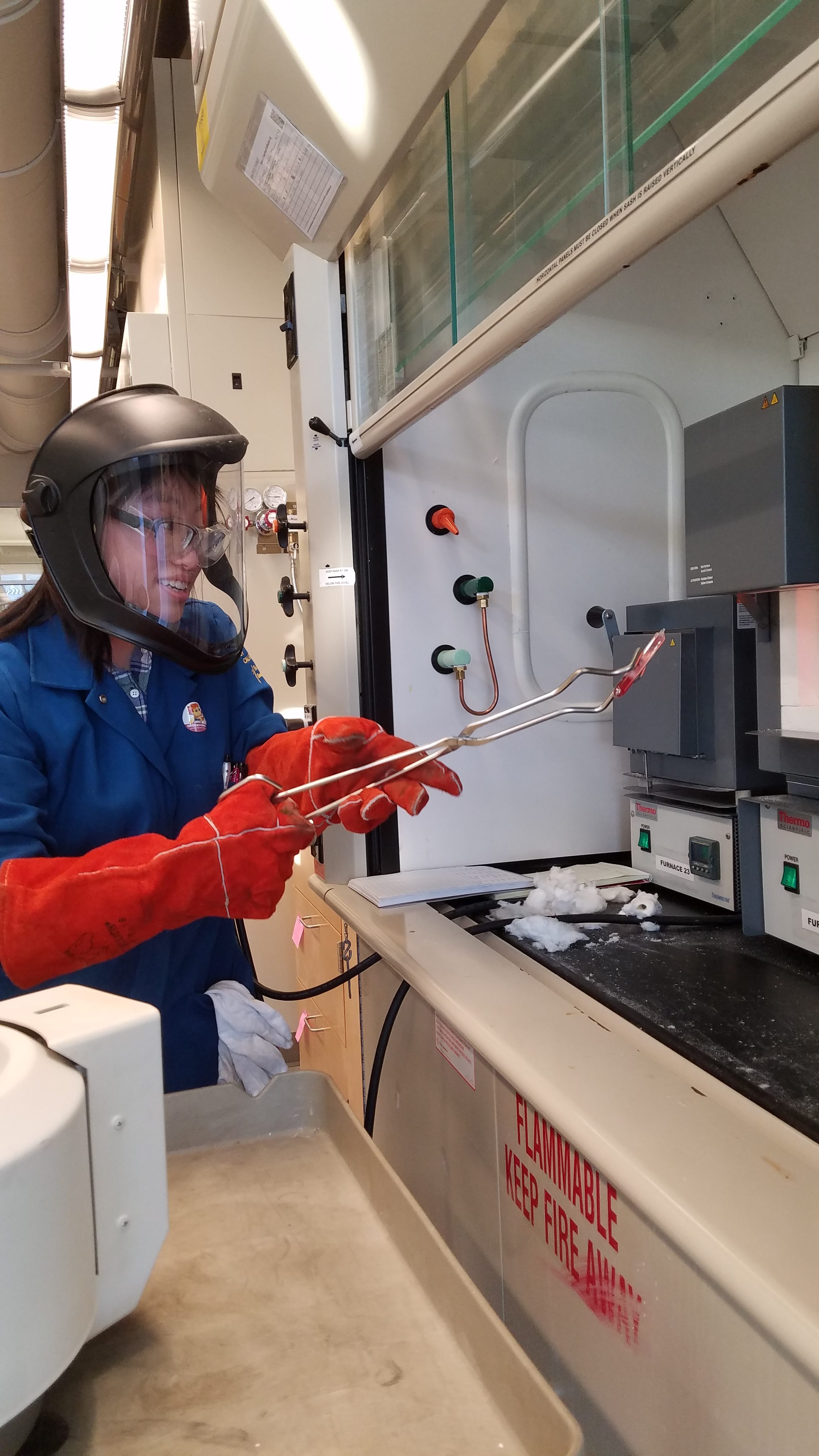Katherine Woo and Shannon Lee receive NASA fellowship grants
Author: Amy Juhnke
Author: Amy Juhnke
Two students in chemistry received NASA fellowship grants from the NASA Iowa Space Grant Consortium (ISGC) for their research into thermoelectric materials, which can convert a heat gradient into electricity.
Katherine Woo and Shannon Lee, both graduate students in chemistry, synthesize solid state materials useful for thermoelectrics in the lab group of Kirill Kovnir, an associate professor of chemistry.

The thermoelectric materials Woo and Lee work with operate much like batteries. In a battery, the flow of charge across a chemical gradient creates electricity. In a thermoelectric material, the flow of charge across a thermal gradient creates electricity. Thermoelectrics are especially useful for powering devices on space missions where batteries may run out and spacecraft or extraterrestrial rover may be too far from the sun to use solar energy. In these scenarios heat generated by the decay of a radioactive isotope can be harnessed by thermoelectric generators to create electricity.
The main obstacle for using thermoelectric materials, especially on Earth where other electricity sources are prevalent, is their efficiency. Thermoelectric materials are currently not as efficient as other electricity sources. In addition to being efficient, thermoelectric materials must be stable, nonhazardous and reasonably low cost.
Woo and Lee synthesize, test and tweak materials searching for optimal thermoelectric properties. They may synthesize a material, test its properties, then add another element into the material or change the crystal structure of the material and test for how the properties changed.
“By changing the structure, you can actually affect the properties,” Lee said.
As gains in efficiency of materials are made, thermoelectrics become more practical for more uses. One way thermoelectrics can be used with existing technology is to pair them with current machines which produce heat as a way to harness some of the lost heat.
“I love chemistry that has a foreseeable application,” Woo said. “Anything that has waste heat: big machines in factories, cars, even computers, we can take this heat and actually turn it to electricity.”
Receiving the NASA grant was inspiring to both Woo and Lee.
“It’s motivational,” Woo said. “It reaffirms that the research I do has future applications.”